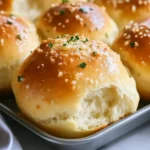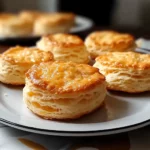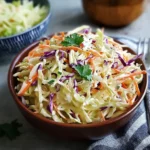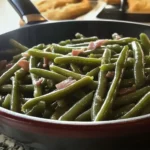Description: Hot water cornbread is a simple yet satisfying Southern staple. This recipe creates a delightful crispy exterior and a soft, moist interior, offering a comforting taste of tradition in every bite.
Why You Will Love This Recipe: This hot water cornbread recipe is incredibly easy to make, requiring minimal ingredients and effort. It’s a versatile side dish that pairs perfectly with a wide variety of meals, from hearty stews and chili to barbecue and collard greens. Its quick preparation time makes it ideal for busy weeknights, and its comforting flavor is sure to please the whole family. The crispy edges and soft center create a textural contrast that’s simply irresistible.
Introduction
Hot water cornbread is a testament to the resourcefulness and culinary traditions of the American South. Born out of necessity and made with humble ingredients, this simple bread has stood the test of time, remaining a beloved dish for generations. Unlike traditional cornbread that is baked in the oven, hot water cornbread is fried in a skillet, giving it a unique texture and flavor. The hot water plays a crucial role in this recipe, helping to soften the cornmeal and create a smooth, cohesive batter that fries up beautifully.
This recipe is a celebration of simplicity, highlighting the natural flavors of cornmeal and the magic that happens when it meets hot water and a sizzling skillet. It’s more than just a recipe; it’s a connection to the past, a taste of home, and a reminder that the most satisfying dishes are often the ones made with the fewest ingredients and the most love. Whether you’re a seasoned Southern cook or a newcomer to this classic bread, this recipe will guide you through the steps to create a batch of golden-brown, crispy-edged, and incredibly delicious hot water cornbread.
Ingredients:
- 2 cups cornmeal
- 1 teaspoon salt
- 1 tablespoon sugar (optional, for a touch of sweetness)
- 1 1/2 cups boiling water
- Vegetable oil for frying
Preparation:
Step 1: In a large bowl, whisk together the cornmeal, salt, and sugar (if using). Ensure all ingredients are evenly distributed for a consistent flavor throughout the cornbread. The sugar adds a subtle sweetness that complements the cornmeal’s natural taste, but it can be omitted for a more traditional, savory version.
Step 2: Gradually add the boiling water to the cornmeal mixture, stirring constantly with a wooden spoon or spatula. The hot water will hydrate the cornmeal, creating a smooth and slightly thickened batter. Be careful when adding the boiling water to avoid splattering. Stir until the mixture is fully moistened and forms a thick, porridge-like consistency. The batter should be thick enough to hold its shape when dropped into the hot oil but not so stiff that it’s difficult to work with.
Step 3: Heat vegetable oil in a cast-iron skillet or heavy-bottomed frying pan over medium-high heat. The oil should be about 1/2 inch deep to ensure the cornbread patties cook evenly and develop a crispy crust. Allow the oil to heat up thoroughly before adding the batter; a properly heated skillet is essential for achieving the desired texture. To test if the oil is ready, drop a tiny piece of batter into the skillet. If it sizzles and browns quickly, the oil is hot enough.
Step 4: Once the oil is hot, shape the cornmeal mixture into small patties, about the size of a golf ball or slightly larger. You can use your hands to shape the patties, or for a more uniform shape, use a spoon or small ice cream scoop. Be careful not to make the patties too thick, as they may not cook through properly.
Step 5: Carefully add the patties to the hot oil, ensuring not to overcrowd the skillet. Overcrowding will lower the oil temperature and result in soggy, undercooked cornbread. Fry the patties until they are golden brown and crispy on both sides, about 2-3 minutes per side. Use a spatula to flip the patties gently, being careful not to break them. Monitor the heat closely, adjusting as needed to prevent the cornbread from burning.
Step 6: Remove the patties from the oil with a slotted spoon or spatula and place them on a plate lined with paper towels to drain excess oil. This step is crucial for preventing the cornbread from becoming greasy. Allow the patties to cool slightly before serving.
COOKING Rating: Easy
Serving Suggestions:
- Serve hot water cornbread as a side dish with Southern classics such as collard greens, black-eyed peas, and fried chicken.
- Pair it with hearty stews, chili, or soups for a comforting and filling meal.
- Enjoy it with barbecue, ribs, or pulled pork for a taste of Southern hospitality.
- Serve it as a snack or appetizer with a dollop of butter, honey, or sorghum molasses.
- Crumble it over salads or use it as a base for savory bread puddings.
Tips:
- For a richer flavor, substitute bacon grease for vegetable oil in the skillet.
- Add a pinch of cayenne pepper to the cornmeal mixture for a touch of heat.
- Experiment with different types of cornmeal, such as stone-ground or white cornmeal, for varying textures and flavors.
- If the batter is too thick, add a tablespoon or two of hot water to thin it out.
- If the batter is too thin, add a tablespoon or two of cornmeal to thicken it.
- To keep the cornbread warm, place it in a preheated oven at 200°F (93°C) until ready to serve.
- Hot water cornbread is best served fresh, but leftovers can be stored in an airtight container at room temperature for up to 2 days. Reheat in a skillet or oven before serving.
Prep Time: 5 minutes
Cook Time: 10 minutes
Total Time: 15 minutes
Nutritional Information: (Note: Nutritional information is an estimate and may vary based on specific ingredients and cooking methods.)
- Calories: Approximately 150-200 per patty
- Protein: 2-3 grams per patty
- Sodium: 150-200 mg per patty
Conclusion
Hot water cornbread is more than just a recipe; it’s a piece of Southern culinary history. Its simplicity and versatility make it a welcome addition to any meal, and its comforting flavor is sure to evoke memories of home-cooked meals and family gatherings. Whether you’re a seasoned cook or a beginner in the kitchen, this recipe is easy to master and guaranteed to please. So, gather your ingredients, heat up your skillet, and get ready to enjoy a taste of Southern tradition.
5 Questions and Answers About Hot Water Cornbread:
Q1: Can I use cold water instead of boiling water?
A: While you can technically use cold water, it’s highly recommended to use boiling water for this recipe. The hot water helps to hydrate the cornmeal more effectively, resulting in a smoother batter and a more tender cornbread. Cold water may result in a grainy texture and a less cohesive patty.
Q2: How can I prevent the cornbread from sticking to the skillet?
A: To prevent sticking, ensure the skillet is well-seasoned and the oil is hot enough before adding the cornbread patties. A cast-iron skillet is ideal for this recipe, as it heats evenly and provides a naturally non-stick surface. Additionally, avoid overcrowding the skillet, as this can lower the oil temperature and cause the cornbread to stick.
Q3: Can I add other ingredients to the batter?
A: Absolutely! Hot water cornbread is a versatile base for adding other flavors and ingredients. Some popular additions include chopped onions, jalapeños, cheese, herbs, or crumbled bacon. Experiment with different combinations to create your own unique twist on this classic recipe. Just be sure not to add too many ingredients, as this can affect the texture of the cornbread.
Q4: How do I know when the cornbread is cooked through?
A: The cornbread is cooked through when it is golden brown and crispy on both sides and the center is no longer doughy. You can test the center by inserting a toothpick or cake tester into the patty. If it comes out clean or with just a few moist crumbs, the cornbread is done.
Q5: Can I bake this recipe instead of frying it?
A: While this recipe is specifically designed for frying, you can adapt it for baking. To bake hot water cornbread, preheat your oven to 375°F (190°C). Grease a cast-iron skillet or baking dish and pour the batter into the pan. Bake for 20-25 minutes, or until golden brown and cooked through. Keep in mind that the texture will be different from the fried version, as it will be less crispy and more like traditional cornbread.




